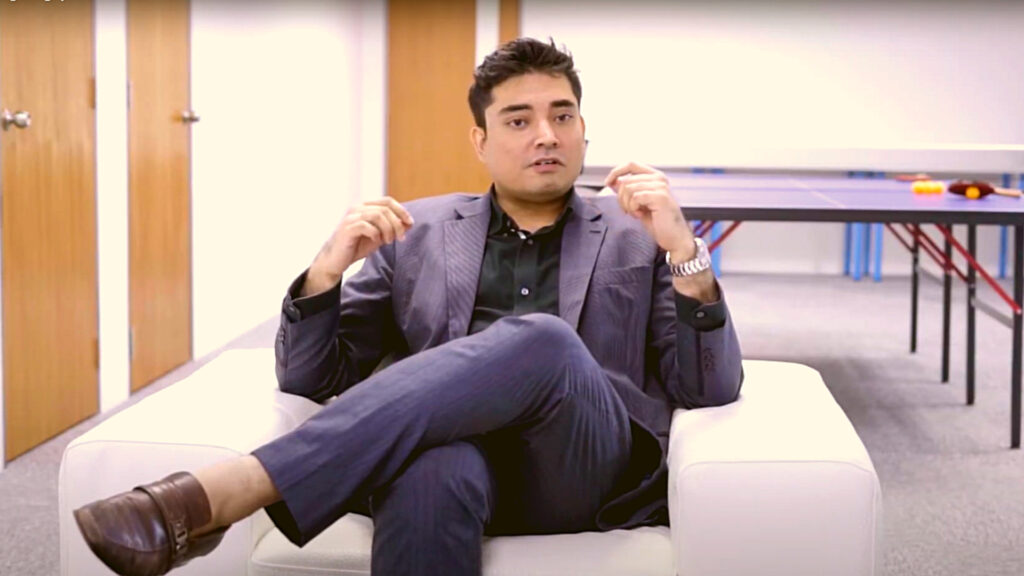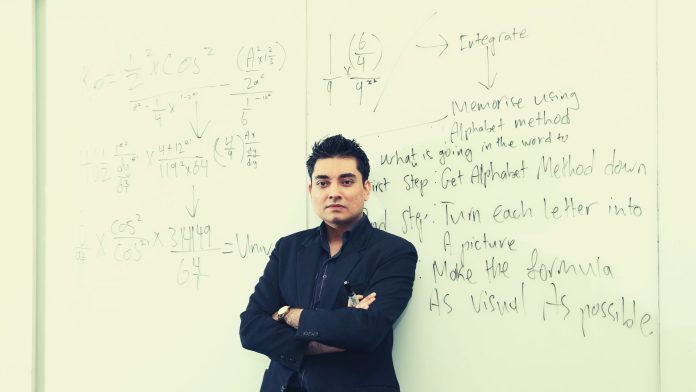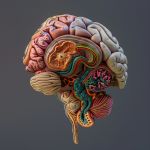Meet Sancy Suraj, the memory maestro from Singapore who has made a name for himself in the world of memory sports. With 6 memory records and over 12 years of experience in training memory techniques, Sancy has helped over 10,000 people worldwide improve their memory skills. He represented Singapore at the World Memory Championships in 2011, where he showcased his incredible abilities and cemented his place among the top memory athletes in the world. In this article, we will explore Sancy’s journey and his insights on memory techniques, from how he developed them to his plans for the future of memory sports.

How did you develop your memory techniques, and how have they evolved over time?
Thank you for asking. I have been fascinated with memory ever since I was a child. When I was in school, I was always curious about how some students could remember everything they learned so easily, while others struggled. This led me to start researching and experimenting with different memory techniques on my own.
Over time, I found that using a combination of visual, spatial, and mnemonic techniques helped me to remember information more effectively. I started to develop my own set of memory techniques and began using them to memorize things like numbers, names, and faces. As I continued to practice, my memory skills improved, and I became more confident in my ability to remember information.
My memory techniques have evolved over time as I have continued to learn and experiment with different methods. For example, I have found that using visualization techniques to create vivid mental images can be very effective for memorizing lists and sequences. I have also experimented with memory palaces, which involve associating information with specific locations in a familiar place, such as a house or a park.
In addition, I have developed a number of strategies for improving my focus and concentration, which are essential for effective memory. For example, I often use mindfulness techniques to help me stay present and focused in the moment, and I take regular breaks to avoid mental fatigue.
Overall, my memory techniques have been developed through years of practice and experimentation, and they continue to evolve as I learn more about how the brain works and how we can optimize our memory skills. I am passionate about sharing these techniques with others and helping them to improve their memory and achieve their goals.
Could you walk us through a particularly challenging memory task that you’ve accomplished using your techniques?
Certainly, I would be happy to. One particularly challenging memory task that I have accomplished using my memory techniques was the memorization of a shuffled deck of cards in the shortest amount of time possible. This is a common task in memory competitions, and it requires a combination of speed, accuracy, and concentration.
To accomplish this task, I first assigned each card in the deck a unique mental image. For example, the Ace of Spades might be associated with an image of a black spade with a picture of an ace on it. I then created a series of visual and spatial associations between each card and its corresponding mental image.
Next, I used a memory palace technique to store and retrieve the information. I imagined myself walking through a familiar place, such as my childhood home, and placing each card in a specific location along the route. For example, the Ace of Spades might be placed on the kitchen counter, while the Two of Hearts might be placed on the living room sofa.
Once I had memorized the entire deck using these techniques, I practiced recalling the order of the cards over and over again, until I was confident that I could do it quickly and accurately.
Finally, I was ready to compete. In the competition, I was given a shuffled deck of cards and had to recall the order of the entire deck in as little time as possible. Thanks to my memory techniques and training, I was able to accomplish this task in just a few minutes, which was a personal best for me at the time.
This challenging task was a great example of how memory techniques can be applied in real-world situations to achieve impressive results. It requires a combination of mental and physical skills, as well as a strong ability to focus and concentrate under pressure. With practice and dedication, anyone can improve their memory skills and achieve their goals.
What role does visualization play in your memory techniques, and how do you go about creating memorable mental images?
Visualization plays a crucial role in my memory techniques. Our brains are wired to process visual information more easily than other types of information, such as text or numbers. Therefore, creating vivid mental images is an effective way to make information more memorable and easier to recall.
When I am creating mental images to remember something, I try to make the images as vivid and unusual as possible. For example, if I want to remember the name “John,” I might create an image of a giant pencil writing the name “John” in the sky. The more unusual and memorable the image, the more likely I am to remember it.
Another technique I use is to create associations between different pieces of information. For example, if I want to remember a shopping list that includes apples, bread, and milk, I might create an image of a cow with an apple in its mouth, standing on a loaf of bread. By creating a visual association between the items, I can remember them more easily.
I also use the memory palace technique, which involves associating each piece of information with a specific location in a familiar place, such as a house or a park. For example, if I want to remember a list of historical events, I might associate each event with a different room in my childhood home. This allows me to create a mental map of the information and remember it more easily.
Overall, visualization is a powerful tool for improving memory, and I have found that creating memorable mental images is an effective way to make information more memorable and easier to recall. By using these techniques, anyone can improve their memory skills and achieve their goals.
“Unlock the power of visualization to create memorable mental images that stick in your mind like vibrant puzzle pieces. With vivid and unusual associations, and the use of memory palaces, you can paint a canvas of unforgettable images that bring your memories to life, making recall a breeze.”
How do you recommend people incorporate memory techniques into their everyday lives and routines?
Memory techniques can be a valuable tool for anyone looking to improve their memory skills and enhance their everyday life. Here are some tips on how to incorporate memory techniques into your daily routine:
Start small: Begin by applying memory techniques to small, everyday tasks, such as remembering a phone number or a grocery list. As you become more comfortable with these techniques, you can gradually apply them to more complex tasks.
Practice regularly: Like any skill, memory techniques require practice to become effective. Try incorporating memory exercises into your daily routine, such as memorizing a poem or a new vocabulary word.
Create associations: Use visualization and association techniques to make information more memorable. Create mental images or connect new information to something you already know.
Use repetition: Repeat information out loud or write it down several times to reinforce it in your memory.
Use technology: There are many apps and tools available that can help you practice and improve your memory skills, such as memory games or flashcard apps.
Take breaks: Give your brain time to rest and consolidate information by taking breaks and spacing out your study sessions.
By incorporating these tips into your daily routine, you can start to see improvements in your memory skills and enhance your ability to remember important information. Remember that memory techniques are not a quick fix, but with practice and dedication, anyone can improve their memory skills and achieve their goals.
Can you tell us about a time when your memory techniques helped you in a personal or professional situation?
There have been many instances where my memory techniques have helped me in both personal and professional situations. One such instance was when I was competing in the World Memory Championships in 2011. One of the events required me to memorize a shuffled deck of cards as quickly as possible. Using my memory palace technique, I was able to quickly associate each card with a specific location in my childhood home, allowing me to recall the entire deck in under 2 minutes. This technique helped me secure a high ranking in the competition and is just one example of how my memory skills have helped me professionally.
On a personal level, my memory techniques have helped me remember important details in my personal life, such as names and faces of people I meet. One instance was when I attended a networking event where I met many new people. Using visualization and association techniques, I was able to create memorable mental images of each person’s name and face, allowing me to remember them even after the event was over. This helped me build meaningful connections with people and advance my career.
Additionally, my memory techniques have helped me in everyday situations, such as remembering where I parked my car or the code to a locker at the gym. By using visualization and association techniques, I can create memorable mental images of the location or code, allowing me to recall them easily when needed.
Overall, my memory techniques have been invaluable in both my personal and professional life. They have allowed me to improve my memory skills, achieve my goals, and build meaningful connections with people. I believe that anyone can benefit from incorporating memory techniques into their daily routine, and I am passionate about sharing my knowledge with others to help them achieve their full potential.
“Memory techniques are not just tools for competitions, but valuable skills that enhance our personal and professional lives. From recalling important details to building meaningful connections, harnessing the power of memory through visualization and association can unlock endless possibilities. Memory training is a key to unlocking your full potential and achieving success.”
Sancy’s memory techniques have evolved over time through experimentation and practice. He began by using the memory palace technique, which involves associating each item to be remembered with a specific location in a mental “palace.” Over time, he incorporated visualization and association techniques to create memorable mental images, allowing him to remember even more complex information. In response to the question of how he goes about creating these mental images, Sancy explains that he uses his imagination to create a story or narrative around the information he needs to remember, using sensory details to make it more vivid and memorable.
Sancy emphasizes the importance of incorporating memory techniques into daily life and routines. He recommends starting small, by using memory techniques for simple tasks such as remembering names or directions, and gradually building up to more complex information. By making memory techniques a habit, he believes that people can unlock their full potential and achieve success in all areas of life. Sancy also shares a personal anecdote of how his memory techniques helped him remember the names and faces of people he met at a networking event, allowing him to build meaningful connections and advance his career.
As for the future of memory techniques and memory sports, Sancy is optimistic about the potential for growth and innovation in the field. With advances in technology and neuroscience, he believes that we will gain a better understanding of how memory works and how we can improve it. Sancy plans to continue pushing the boundaries of what is possible with memory techniques, experimenting with new methods and techniques to improve his memory skills and help others do the same. He is committed to sharing his knowledge and expertise with others through workshops, seminars, and online courses, and hopes to inspire a new generation of memory athletes.
What do you see as the future of memory techniques and memory sports, and how do you plan to continue pushing the boundaries in this field?

I believe that the future of memory techniques and memory sports is very promising. With advances in technology and neuroscience, we are gaining a better understanding of how memory works and how we can improve it. I believe that memory techniques will continue to evolve and become more accessible to people around the world, allowing them to unlock their full potential and achieve their goals.
In terms of memory sports, I see the field growing in popularity and becoming more competitive. As more people become interested in memory techniques and memory sports, we will see new world records being set and new techniques being developed. Additionally, I believe that memory sports will become more diverse, with new events and challenges being introduced to test the limits of competitors.
As for my own plans in this field, I plan to continue pushing the boundaries of what is possible with memory techniques. I am constantly experimenting with new techniques and methods to improve my memory skills and help others do the same. I also plan to continue competing in memory sports events, setting new records and inspiring others to pursue their own memory goals.
Finally, I believe that it is important to share my knowledge and expertise with others. Through workshops, seminars, and online courses, I hope to teach others the power of memory techniques and how they can be used to achieve success in all areas of life. I am excited to see where the future of memory techniques and memory sports will take us, and I am committed to being at the forefront of this exciting field.
“The future of memory techniques and memory sports holds boundless potential for unlocking the full power of our minds. With advancements in technology and a deeper understanding of how memory works, we are poised to push the boundaries of what’s possible. I am dedicated to continuing my pursuit of excellence, setting new records, and sharing my knowledge to empower others on their memory journey. The future is bright, and I’m excited to be a part of it!”
Sancy Suraj is a true expert in the field of memory techniques and memory sports, with a wealth of knowledge and experience to share. His dedication to pushing the boundaries of what is possible with memory techniques and his commitment to teaching others have made him a true leader in the field. By incorporating his insights into our daily lives, we can all unlock our full potential and achieve success in all areas of life. We look forward to seeing what the future holds for Sancy and the exciting world of memory techniques and memory sports.





























